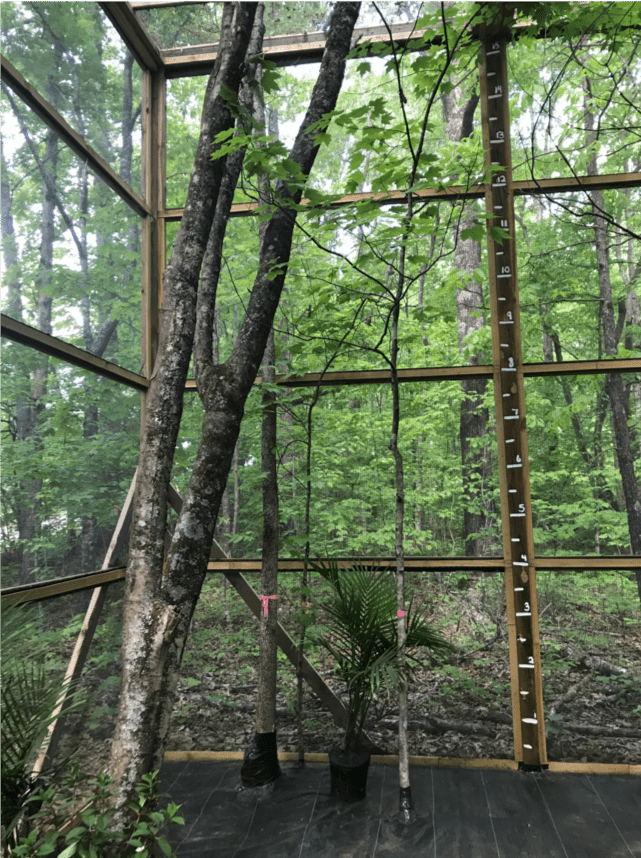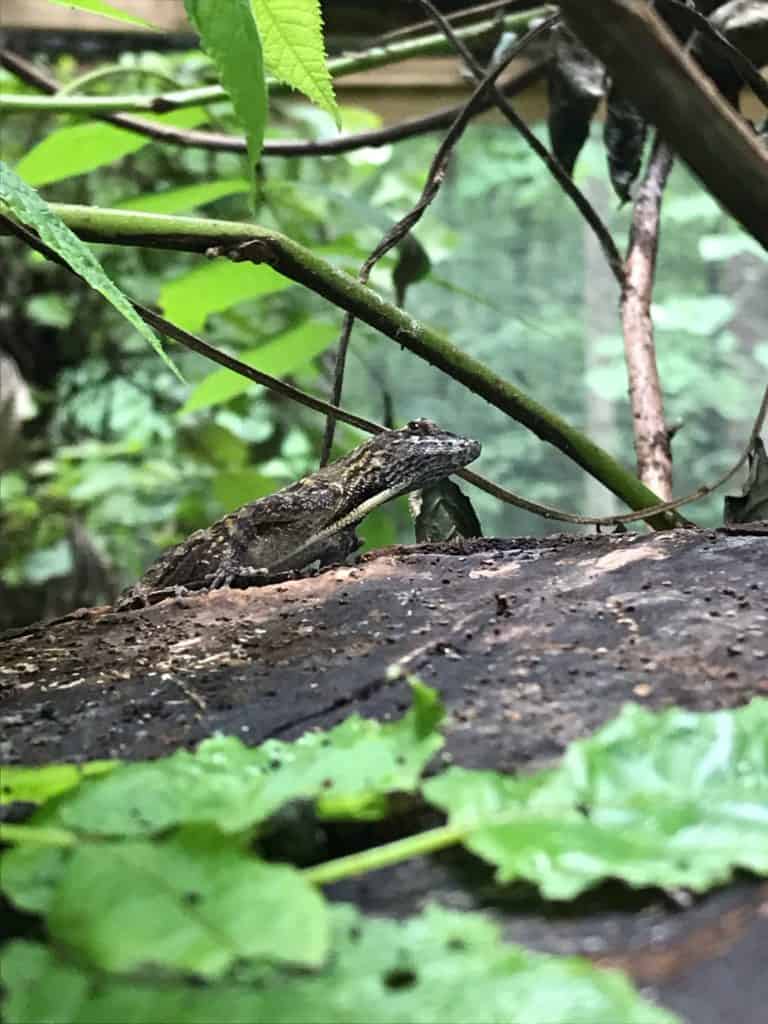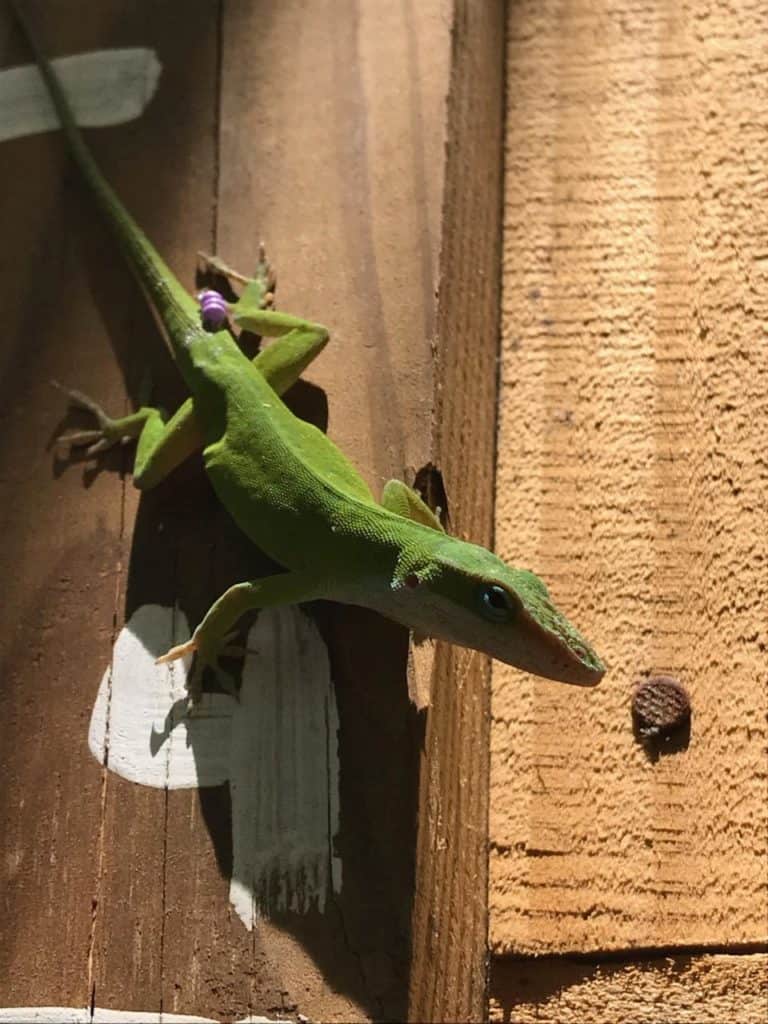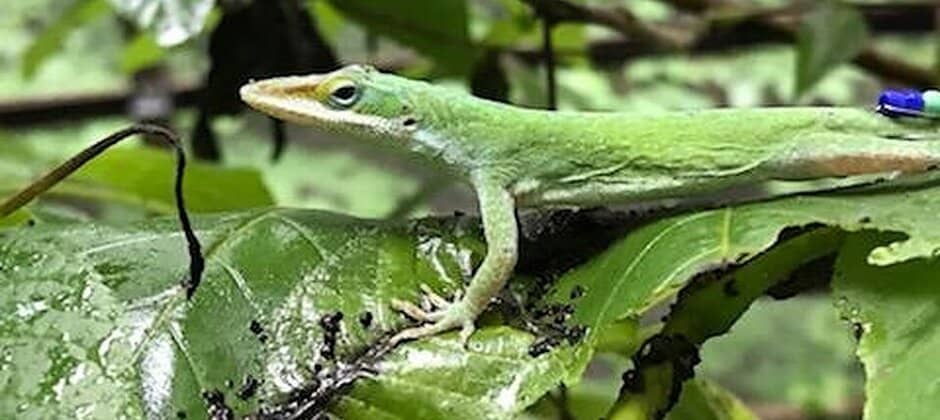Share this article
Densely packed invasive anoles outcompete natives
Invasive brown anoles might outcompete their native cousins in the southeastern U.S. merely by living more densely.
Brown anoles (Anolis sagrei) inadvertently came to Florida in the 1800s by tagging along on cargo shipments. Since then, the invasive species have moved steadily northward in the state, often taking over territories occupied by native green anoles (Anolis carolinensis). Researchers know that over time, the invasive Cuban anoles change the native species’ habits. After moving in, the newcomer species typically occupies the ground and lower parts of plants and trees, while the green anoles occupy an ecological niche higher up on trees and bushes. The native anoles also become less common once the brown anoles have established themselves in the new territory.

The experiment enclosure used in the study. Credit: Harry Pepper
“The brown anole is really taking over Florida,” said Jordan Bush, a postdoctoral researcher with the Oakridge Institute for Science and Education.
Many researchers assumed this takeover was due to the invaders having a size advantage over the green anoles. “In anole literature, there is a sense the brown anoles are kind of bullies,” Bush said. They’re heavier than green anoles, and a little bit bigger.”
But researchers hadn’t really observed an invasion in real time, so this was partly just speculation.
In a study Bush led recently in Animal Behavior, she and her colleagues, including a number of undergraduate students, set up experimental enclosures in a research forest affiliated with The University of Tennessee, Knoxville where she was conducting her PhD research on anoles at the time.
The researchers fixed color-coded plastic beads using a small wire on the base of the lizards’ tails to tell them apart. Then, they introduced a group of native green anoles to the open-air enclosures that were about the size of a small barn—16 feet high with trees and potted plants. They observed their behaviors for 10 days as the anoles got used to their new environment.

A brown anole. Credit: Harry Pepper
Then, they separated anoles into two different groups. In one enclosure, they introduced a group of invasive brown anoles to the native ones. Another enclosure acted as a control area, where they introduced a new group of native green anoles to other natives that had already established territories inside. They observed their behaviors for an additional 10 days after the introduction. The team did this for three years from 2017 to 2019 between May and August, conducting studies on 16 populations in total.
“I liked working with them—they’re cute, they’re fun and they are great to work with,” Bush said, adding that some individuals were “chill guys” and other were “bullies.” “They really do have their own personalities.”
What they observed in the control experiment wasn’t surprising. Male green anoles are fairly territorial with each other, displaying their colorful neck dewlaps and doing pushups when other males got too close. If these gestures weren’t enough to resolve the lizards’ problems, they would fight.

A green anole fixed with a colored bead for identification. Credit: Harry Pepper
But when Bush and her colleagues introduced brown anoles in the other enclosure, they were surprised to see that the green anoles mostly ignored the newcomers.
“They just didn’t interact with each other very much,” she said. “I was really expecting there to be a lot more aggression.”
Even the fights that did occur didn’t produce clear winners, despite the brown anoles being a little bigger than the green ones. Bush said the findings suggest Cuban brown anoles aren’t necessarily bullying their smaller native cousins out of their previous homes like researchers previously thought. She acknowledges that the outdoor laboratory setting they used isn’t exactly natural, but still—“If they were going to fight, they would have fought in these situations,” she said.
Instead, she speculated that brown anoles in the wild might be outcompeting green anoles based on sheer numbers. Brown anoles may lay eggs more often than green anoles. The Cuban newcomers also tolerate much denser living conditions, while green anoles don’t. This allows the invasive species to take over more territory.
Their ability to exploit urban areas could be mirrored in the findings of other recent work examining the habitat patterns of both species. That research shows that the invasive brown anoles might be better at exploiting urban areas in Florida than wild areas.
Header Image: A green anole in an experimental enclosure. Credit: Harry Pepper








